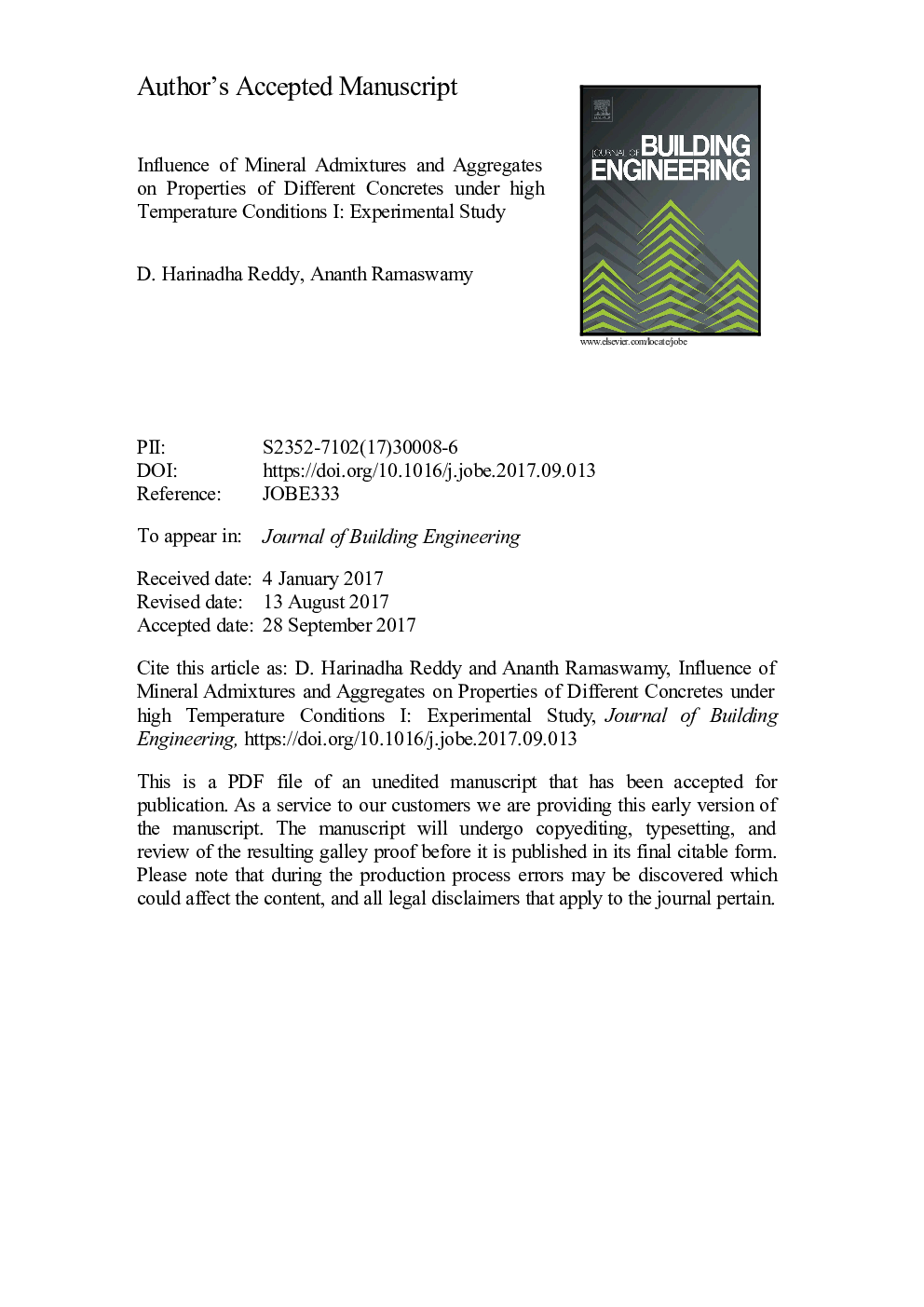| Article ID | Journal | Published Year | Pages | File Type |
|---|---|---|---|---|
| 6750121 | Journal of Building Engineering | 2017 | 28 Pages |
Abstract
Fire in concrete structures deteriorates mechanical properties of the material and leads to structural collapse under loads. Two types of spalling occurs in concrete when exposed to high temperature, namely explosive and thermal spalling. Explosive spalling occurs once the hydrostatic stress (developed in the pores) exceeds the tensile strength of the concrete. Where as thermal spalling of concrete happens due to degradation of material properties (elastic modulus, compressive and tensile strength) when exposed to high temperature. The present study comprises of an experimental (this manuscript) and analytical program (part II) to assess deformations due to high temperature in different concretes. Seven different concrete mixes have been made for this purpose and among the seven mixes, three mixes are self compacted concrete mixes (35Â MPa, 55Â MPa and 70Â MPa), a high volume fly ash concrete mix (45Â MPa), a normally vibrated OPC concrete mix (45Â MPa) and a heavy density concrete mix (25Â MPa). Two ages were selected to test these concretes to study the age effects, one at 28 days and other at 365 days. All these mixes were tested in three different test approaches, which are stressed (ST), unstressed (UST) and unstressed residual strength (URST) approach. Each approach has its specific purpose of extracting residual properties of concrete when exposed to high temperature. The findings indicate that both concrete with supplementary cementitious material (fly ash) and heavy density concrete (Haemetite) were gound to be structurally robust when exposed to high temperature.
Related Topics
Physical Sciences and Engineering
Engineering
Civil and Structural Engineering
Authors
D. Harinadha Reddy, Ananth Ramaswamy,
